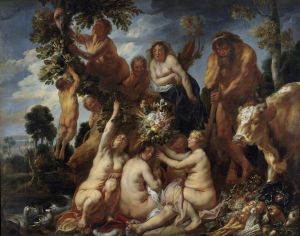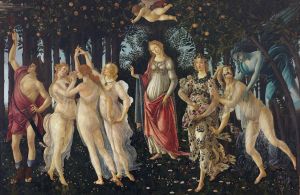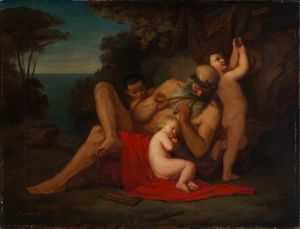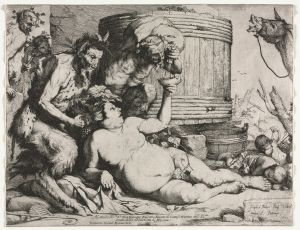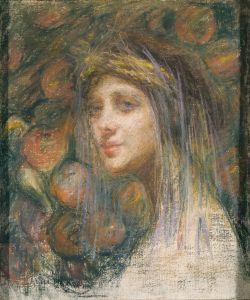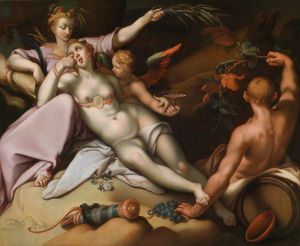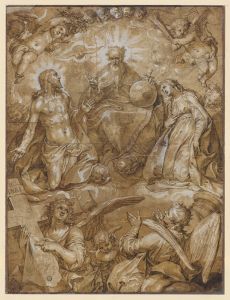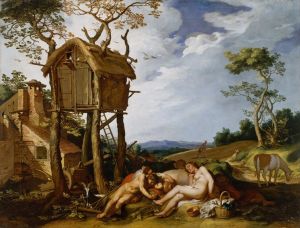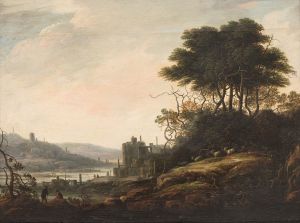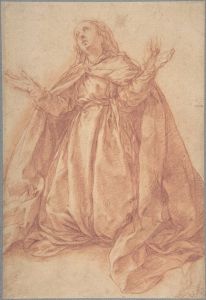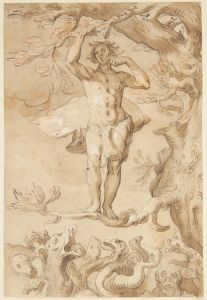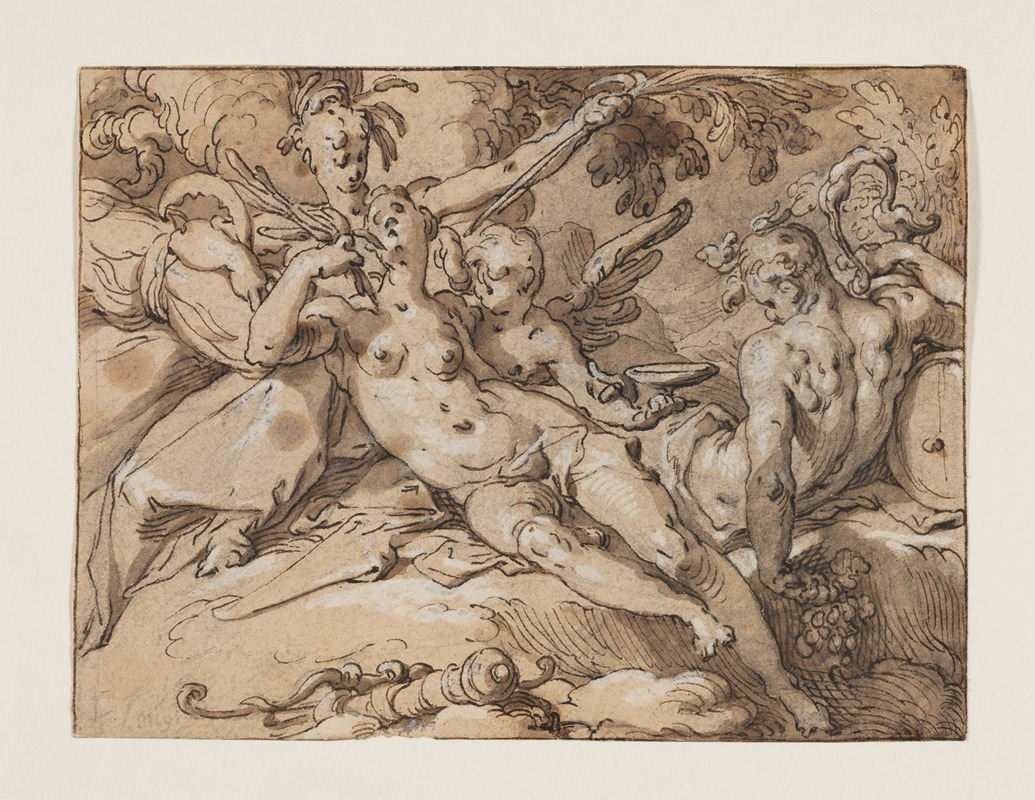
Venus and Bacchus
A hand-painted replica of Abraham Bloemaert’s masterpiece Venus and Bacchus, meticulously crafted by professional artists to capture the true essence of the original. Each piece is created with museum-quality canvas and rare mineral pigments, carefully painted by experienced artists with delicate brushstrokes and rich, layered colors to perfectly recreate the texture of the original artwork. Unlike machine-printed reproductions, this hand-painted version brings the painting to life, infused with the artist’s emotions and skill in every stroke. Whether for personal collection or home decoration, it instantly elevates the artistic atmosphere of any space.
Abraham Bloemaert, a prominent Dutch painter and printmaker of the late 16th and early 17th centuries, is known for his significant contributions to the development of Dutch Baroque art. One of his notable works is "Venus and Bacchus," a painting that exemplifies his mastery in combining classical themes with the stylistic elements of his time.
"Venus and Bacchus" is a representation of two prominent figures from Roman mythology. Venus, the goddess of love and beauty, and Bacchus, the god of wine, are depicted in a scene that captures the essence of both deities. Bloemaert's work often reflects a deep understanding of mythological subjects, and this painting is no exception. The choice of these two figures is significant, as it brings together themes of love, beauty, indulgence, and revelry, which were popular in the art of the Baroque period.
Bloemaert's style is characterized by its dynamic composition and the use of vibrant colors, which are evident in "Venus and Bacchus." The painting likely showcases his ability to render the human form with grace and expressiveness, a skill he honed through his extensive study of classical art and anatomy. His figures are often depicted with a sense of movement and vitality, which adds to the overall dynamism of the composition.
The background and setting of the painting would typically reflect Bloemaert's attention to detail and his ability to create a harmonious balance between the figures and their surroundings. His use of light and shadow would enhance the three-dimensionality of the scene, drawing the viewer's eye to the central figures while also providing depth to the composition.
Abraham Bloemaert was a key figure in the Utrecht School, a group of artists known for their Caravaggisti influences, which is evident in the dramatic use of chiaroscuro in his works. Although "Venus and Bacchus" may not directly exhibit the stark contrasts typical of Caravaggio, Bloemaert's adaptation of these techniques would contribute to the overall mood and atmosphere of the painting.
Throughout his career, Bloemaert was known for his versatility, working in various genres including history painting, landscapes, and portraits. His ability to adapt and evolve his style over time allowed him to remain a relevant and influential figure in the Dutch art scene. "Venus and Bacchus" is a testament to his skill in blending classical themes with the emerging Baroque sensibilities of his era.
While specific details about the provenance or current location of "Venus and Bacchus" may not be widely documented, Bloemaert's works are held in high regard and can be found in major museums and collections worldwide. His influence on subsequent generations of artists, including his own students, underscores his importance in the history of art.
In summary, "Venus and Bacchus" by Abraham Bloemaert is a fine example of the artist's ability to merge mythological subject matter with the stylistic innovations of the Baroque period. Through his expert use of composition, color, and form, Bloemaert creates a work that captures the timeless allure of its mythological subjects while reflecting the artistic trends of his time.





